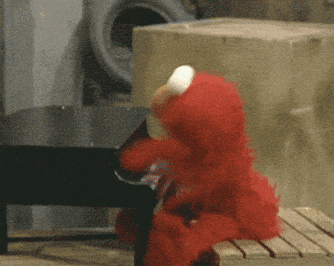- Skills School Forgot
- Posts
- Relax on Sat. | Beginner's Guide to Playing the Piano
Relax on Sat. | Beginner's Guide to Playing the Piano
Let's learn the basics of piano playing. Today we'll learn about notes, octaves, and a great app to make learning easy.
A Keyboard Warrior
Learning to play the piano is a wonderful skill to challenge yourself and impress your friends. Starting out can be tough because, unsurprisingly, no one is good when they first play. With consistent practice and desire to improve you can learn a couple of songs in the matter of months. Let’s learn some basics to the Piano. Enjoy!
What Type of Piano Should I Buy?
The first part of playing a piano is having a piano. Depending on your budget, space, and needs, you’ll want to weigh your piano options.
A grand piano will have a large back taking up a couple feet behind the keys. If you live in a tight space, you’ll want to avoid this type. Grand pianos will be pricey, heavy, and need to be tuned. They sound the best and make for great home decor.
An upright piano won’t have a large back but will be heavy to maneuver up and down steps. These have an “older” sound to them but are cheaper than grand pianos and fit in smaller spaces. These are common in school music rooms.
Keyboards are electronic pianos which have the same keys, but their sound is digitally created. Keyboards are the cheapest option and won’t sound as magnificent as a string piano, but they are a fantastic option for someone just starting out.
What Are Notes, Octaves, and Sheets
Piano Keys

Image 1: Piano keys and the notes they match to
On a piano there are white and black keys. All keys play a different note (sound) and are ~invisibly~ labeled with a letter from A-G (A,B,C,D,E,F,G). After letter G, the next note will once again be an A note. Every group of 8 notes (A-G) is called an octave. Oddly enough the C note is considered the start to an octave instead of the A note. Because of the layout of a piano, it’s easier to visualize C as the starting note instead of A.
When sitting in front of a piano the notes furthest to the left will sound the lowest or deep and the notes to the right will sound the highest. In the middle of the piano, we will find what instructors call “middle C”. This note is a north star for new players since a majority of piano pieces play in this octave. When first learning to play, your right-hand thumb will start on middle C.

Image 2: The hand set up for piano players
Reading Music
Piano songs are written on sheet music. Learning to read sheet music is a crucial part to playing the piano. For beginners, some important aspects to know are; when to play with your right vs. left hand, what each note on sheet music correlates to the piano keys, and how long should you hold each key down?
How Do I Know What Key to Play?

Image 3: Notes on the staff and the piano key they refer to.
When looking at sheet music, you’ll notice musical notes up and down the horizontal lines. Depending on where the note sits on the line, you’ll play a specific key on the piano. In the image above, you’ll notice that the C note has a line through it, then D is placed right below the first horizontal line. As you work your way up the keys, notes get higher or lower on the line. The location of the note determines the piano key you play.
Playing with Your Right vs. Left Hand

The right hand plays the higher pitched notes and left hand plays deeper pitched notes. On sheet music, notes played with the right hand have a Treble Clef on the lines (staff) and notes played with the left hand will have a bass clef. If a song only has treble clefs, then you will only play with your right hand.
This is An Intro to an Intro
This newsletter is really to inspire you to try out the piano. It is by no means a perfect or even well-done guide to playing. You can follow this article to find a fuller guide to learning sheet music. How to Read Sheet Music: A Step-by-Step Guide – Musicnotes
There’s an infinite amount of information about playing the piano that you can find online. YouTube has a bunch of free songs and Google has a ton of free sheet music. There are even phone apps that will teach you how to play. I encourage you to try and challenge yourself to pick up this new skill.
Know Someone Who Would Love This?
The link below will take you to the magical land of learning also known as the landing page. If you were forwarded this email, you can receive this daily newsletter tomorrow by clicking that blue button below and sharing your email address.


